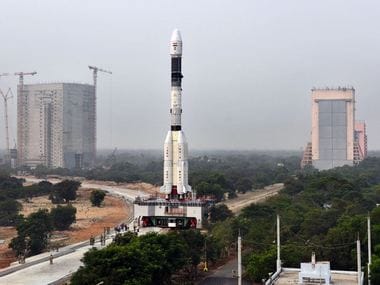ISRO successfully launches the GSAT-6A satellite into orbit aboard the GSLV-F08 rocket
ISRO has successfully launched the GSAT-6A satellite aboard the GSLV-F08 rocket from Andhra Pradesh's Sriharikota launchpad and placed in the Geosynchronous orbit of the Earth. The S-band communication satellite has a twin already placed in the orbit called the GSAT-6 and it was launched back in 2015.
All stages of the rocket were successfully executed during the launch and the payload fairing containing the GSAT-6A was separated as per calculations. The satellite will join its brother in orbit and the S-band satellite's 2.5 GHz band, which is used for 4G transmission, is going to be very crucial for telecom giants.
As of now, this happens to be the fifth successful launch of the GSLV-F08 rocket with an Indian-built cryogenic upper stage engine. As a matter of fact, the rocket has a spotty history of having five of its 11 flights ending in a failure.
The satellite also contained an Unfurlable Antenna' which is six meters long and has an umbrella-like shape. Once the satellite has been placed in orbit this antenna will unfurl and become nearly three times as broad as a normal antenna. The GSAT-6A will provide multi-beam coverage facility with five spot beams of the S-band along with one beam of the C-band.
The GSAT-6A is also believed to be designated for military use and has a 0.8-meter long antenna for the hub communication link. The satellite weighs 2066 kg, costed around Rs 270 crores and is the most powerful home-made communication satellite till date.
This is ISRO's last launch of the financial year and a navigation satellite is set to be launched after the next fiscal year begins. The GSAT-6A is going to have an estimated lifespan of up to 10 years as per ISRO.
ISRO successfully launches the GSAT-6A satellite into orbit aboard the GSLV-F08 rocket
![ISRO successfully launches the GSAT-6A satellite into orbit aboard the GSLV-F08 rocket]() Reviewed by MNG
on
March 30, 2018
Rating:
Reviewed by MNG
on
March 30, 2018
Rating:










No comments